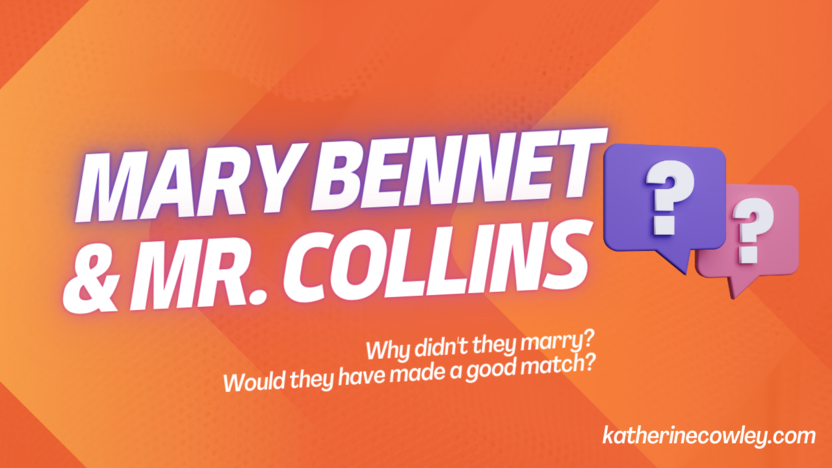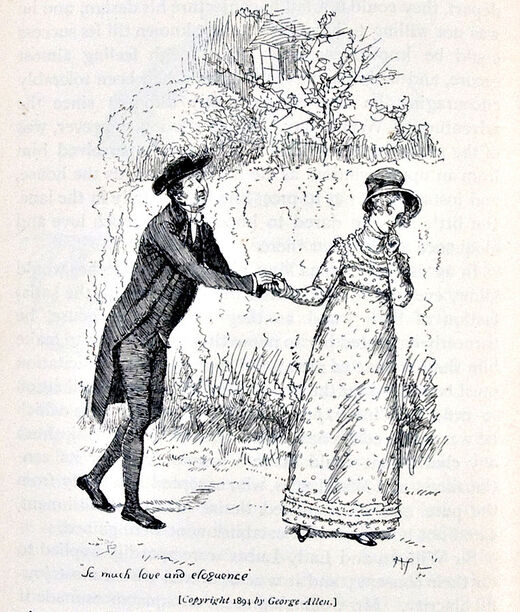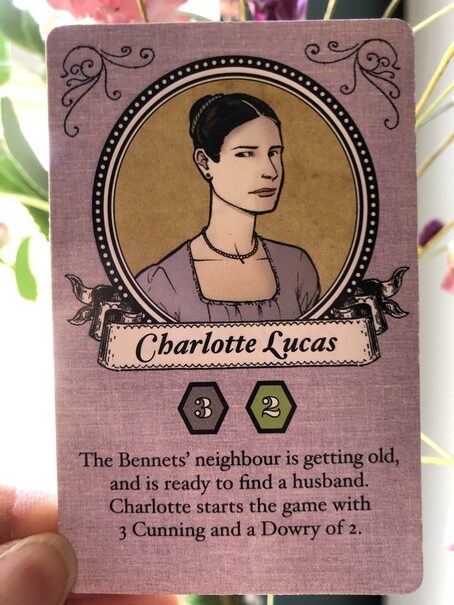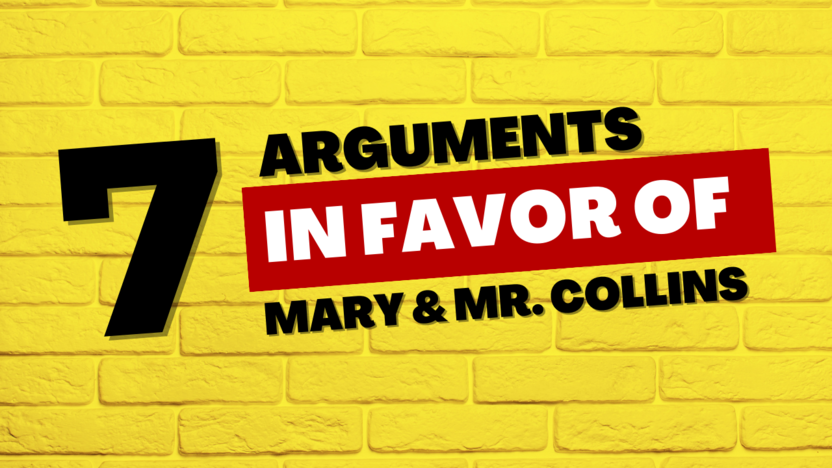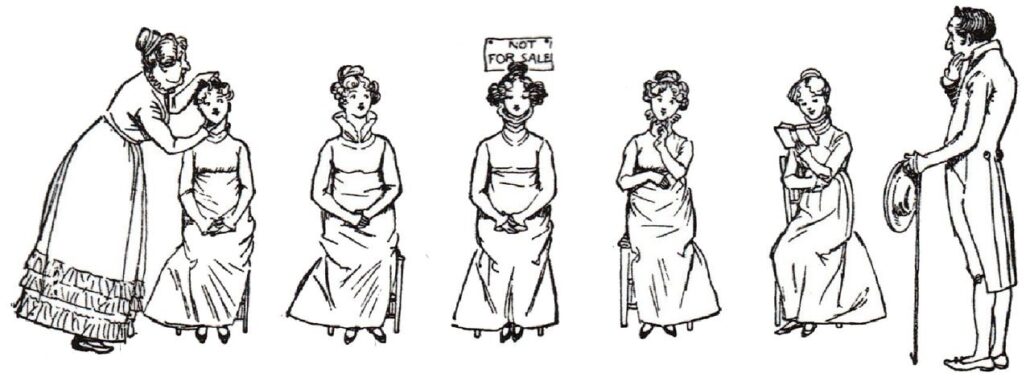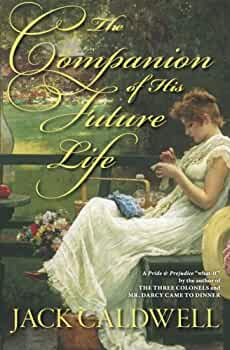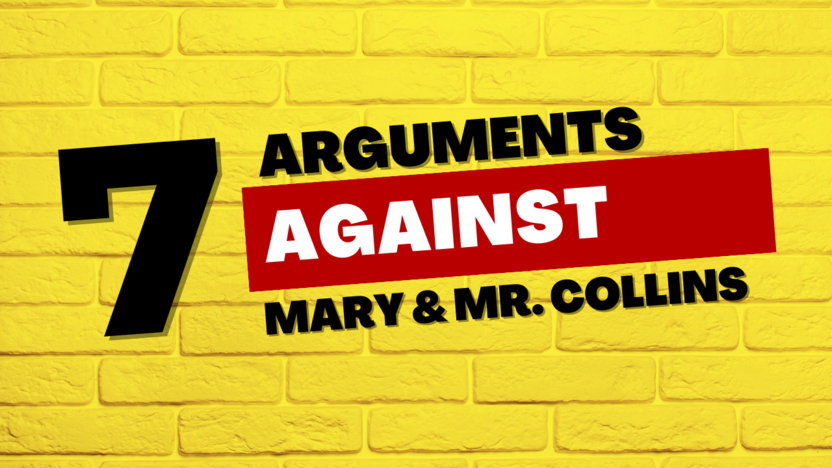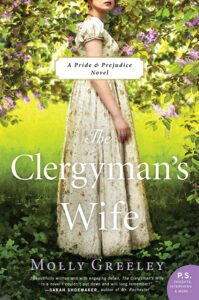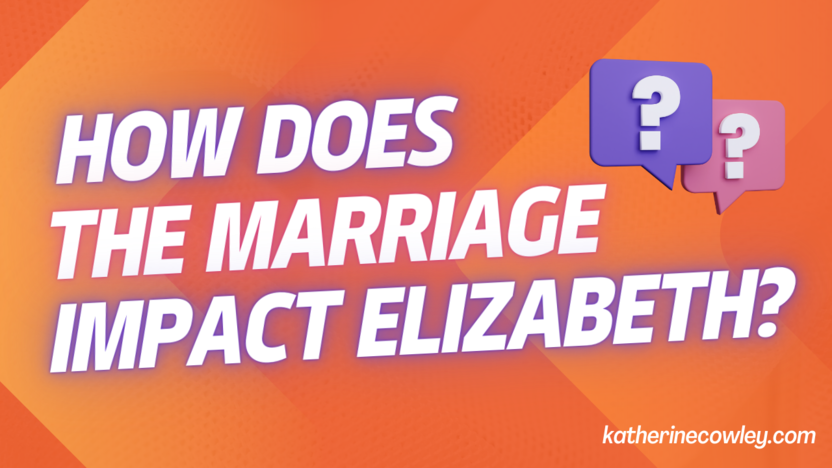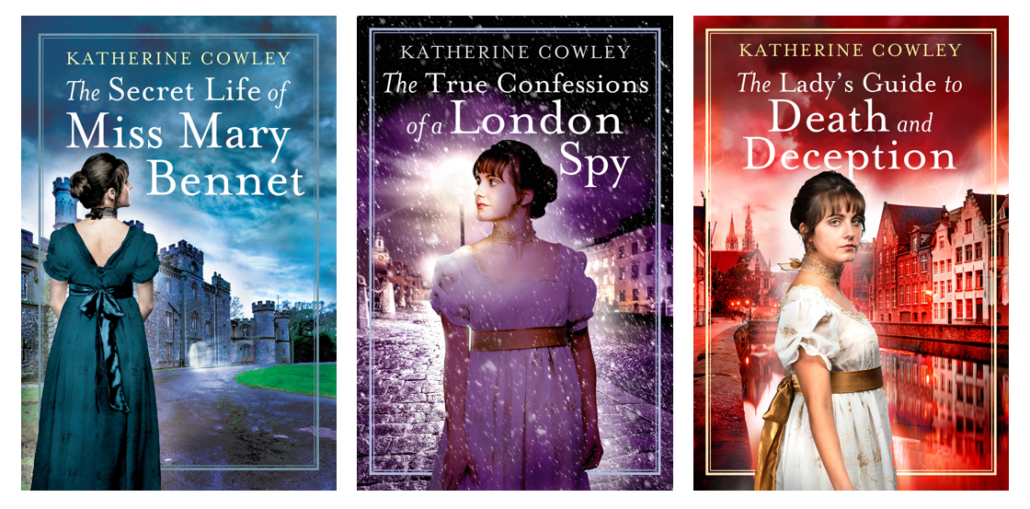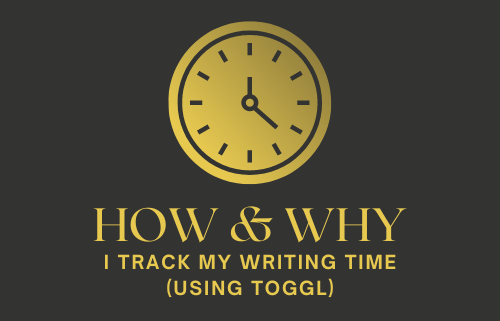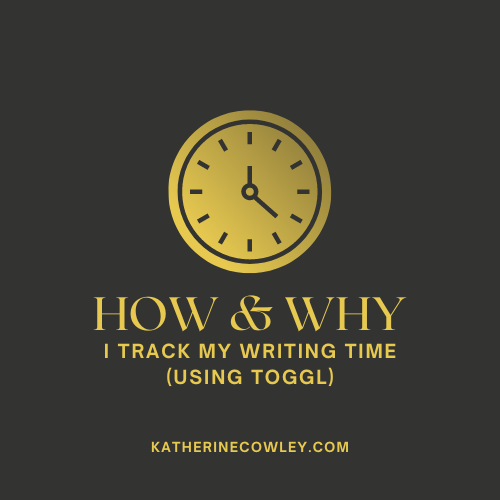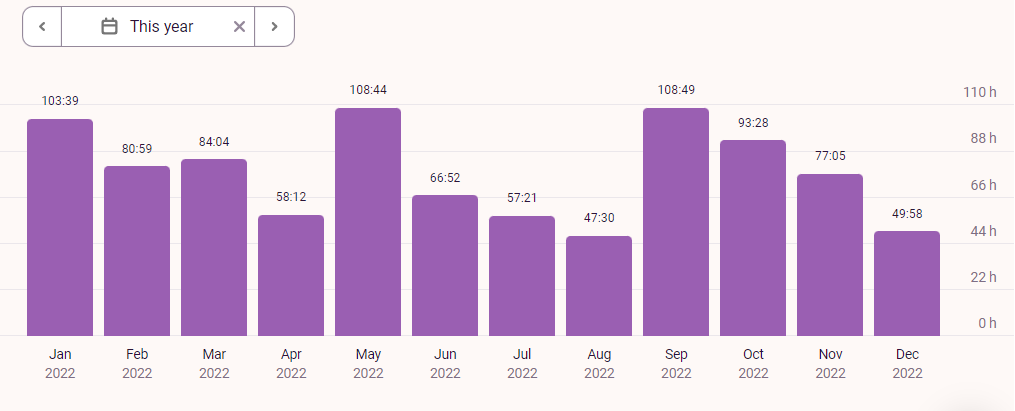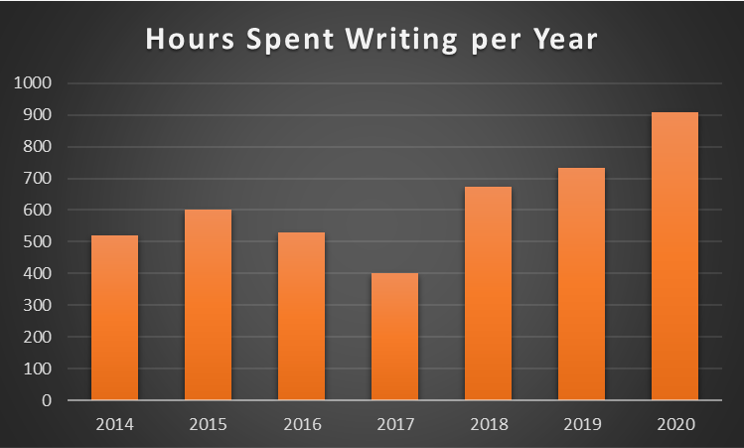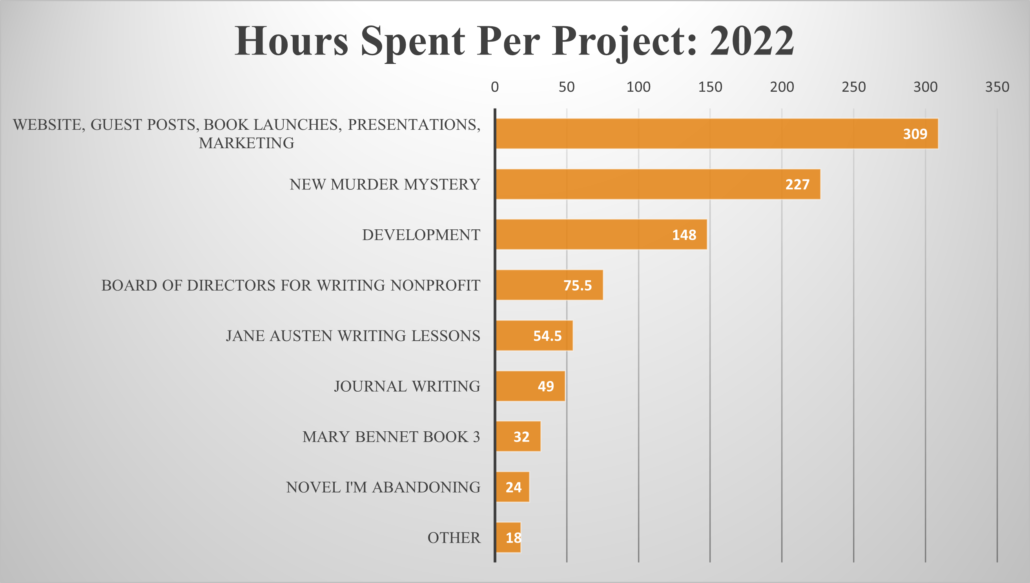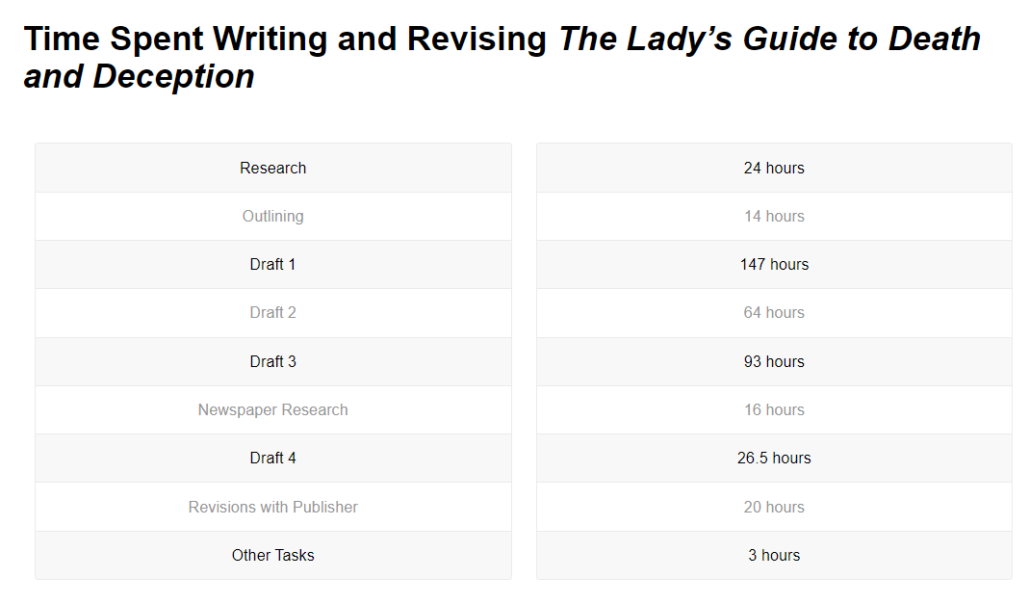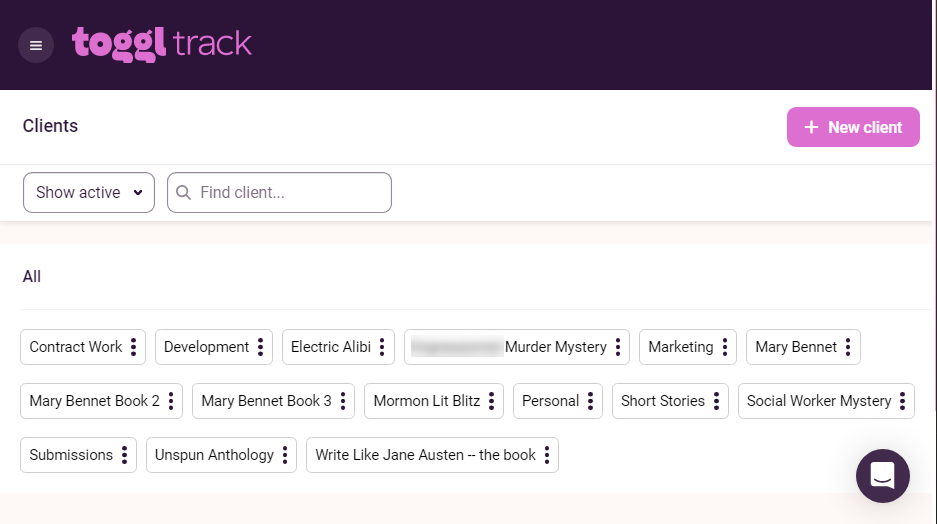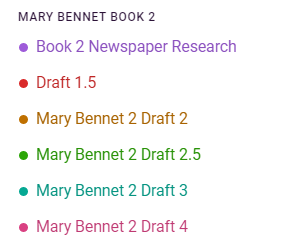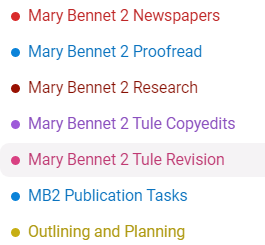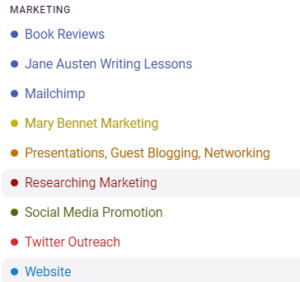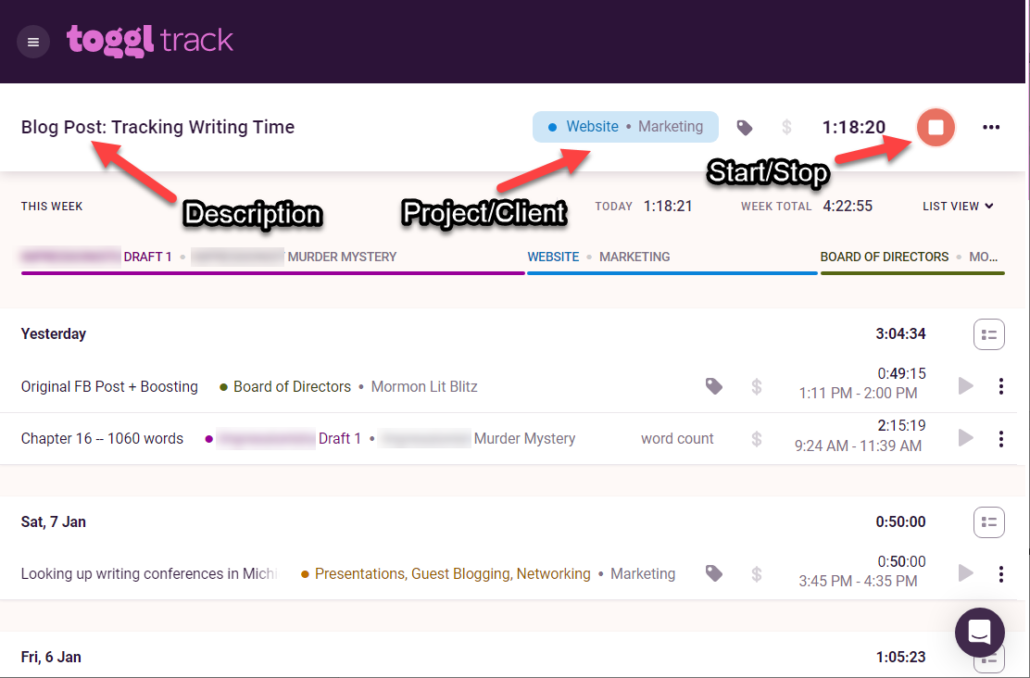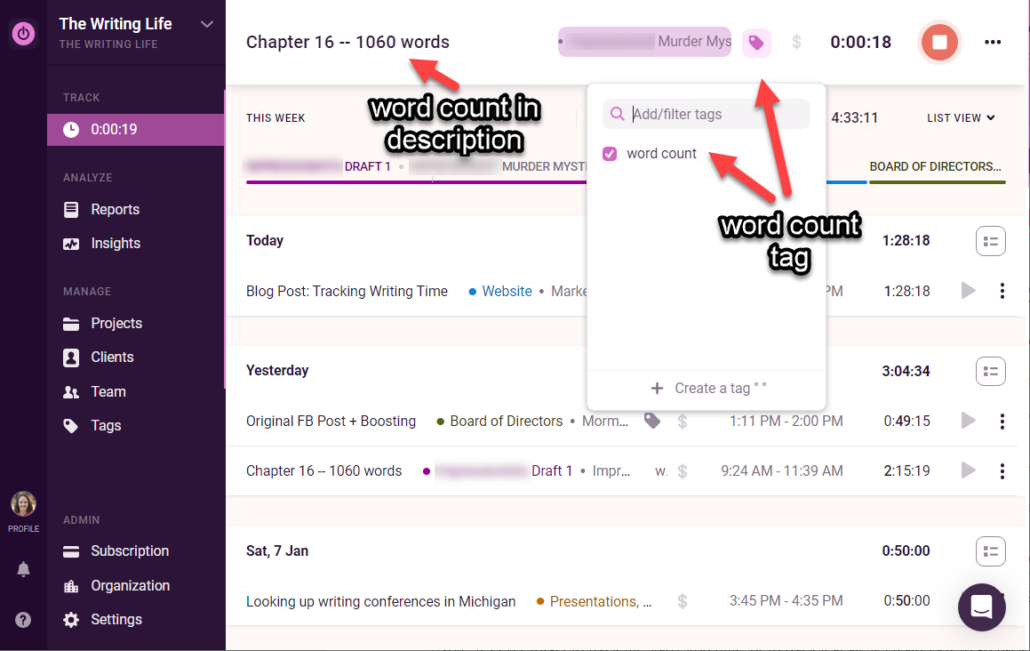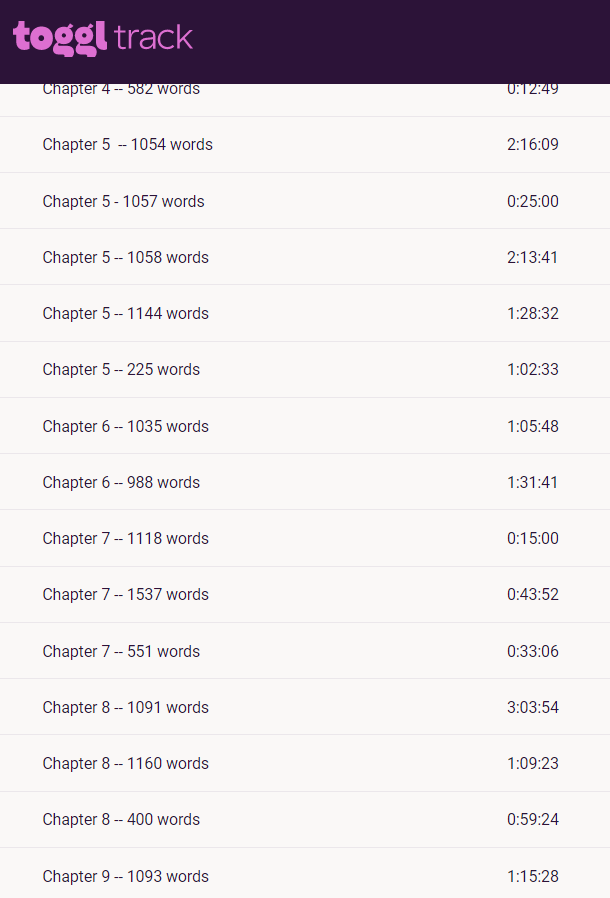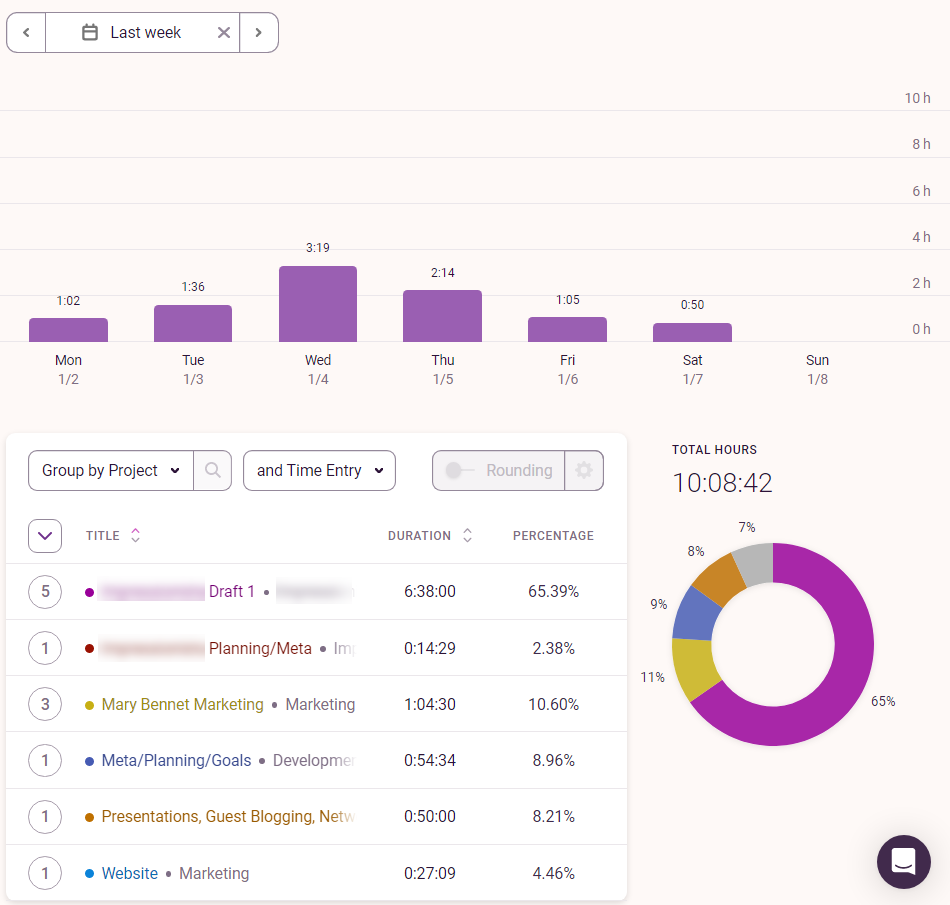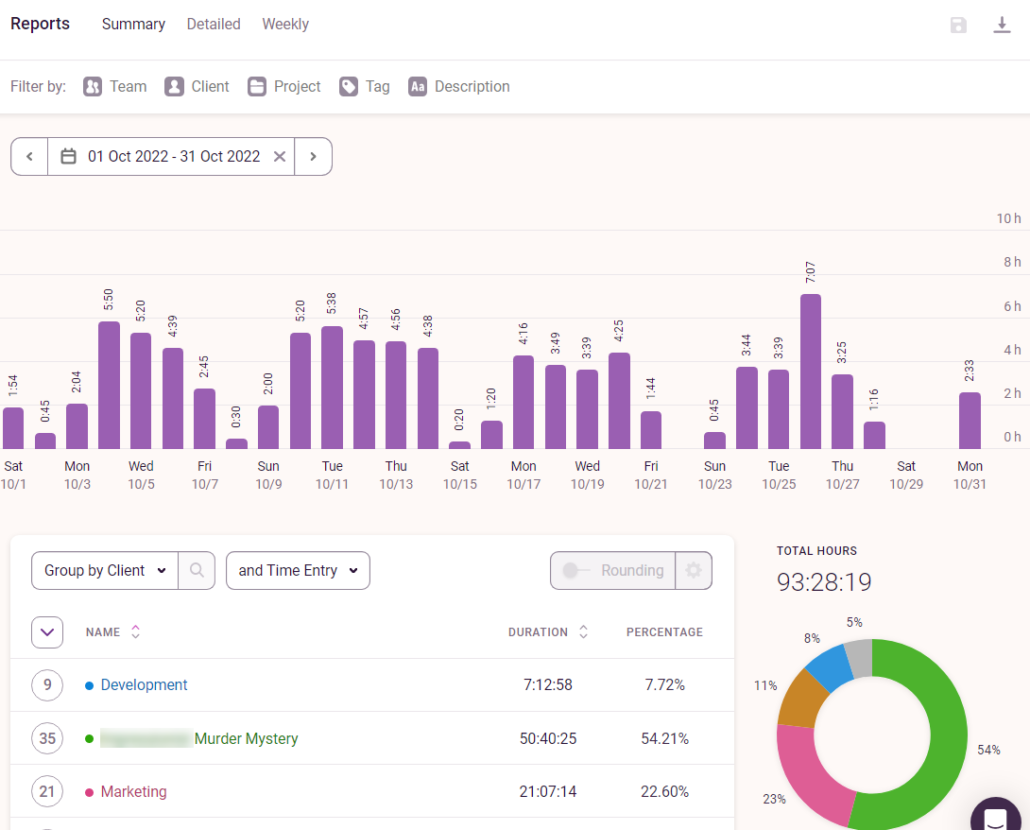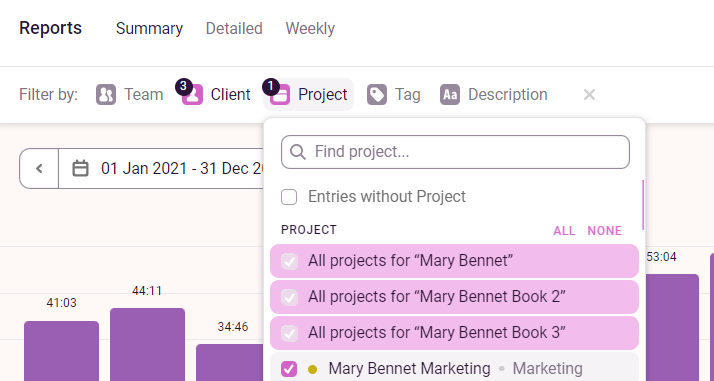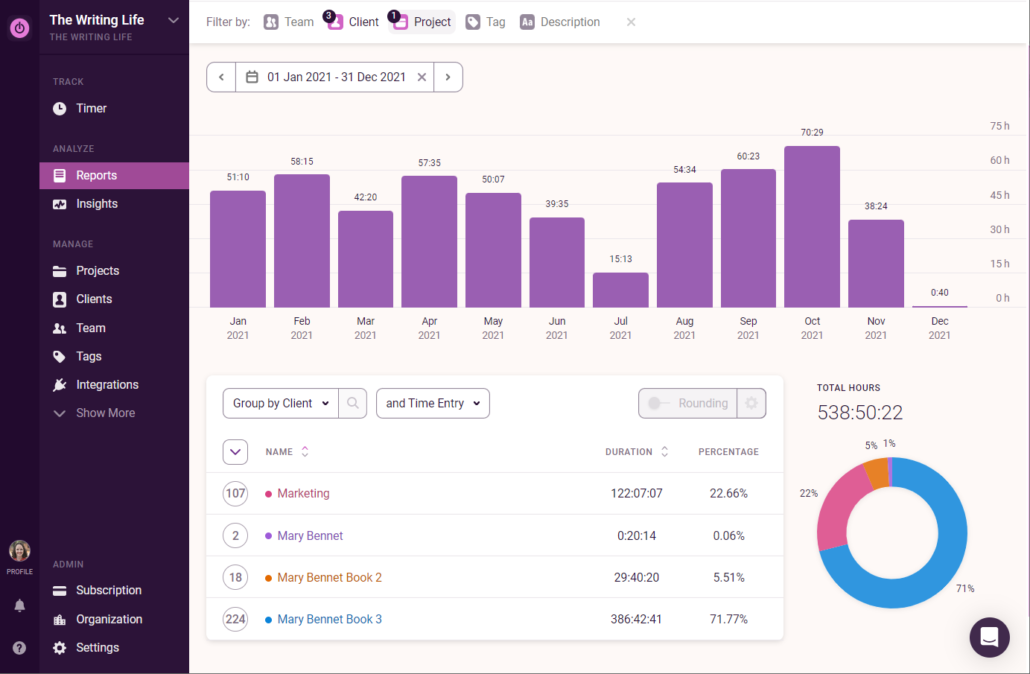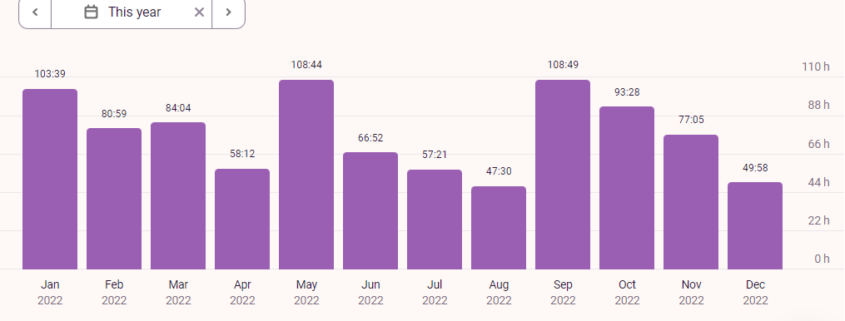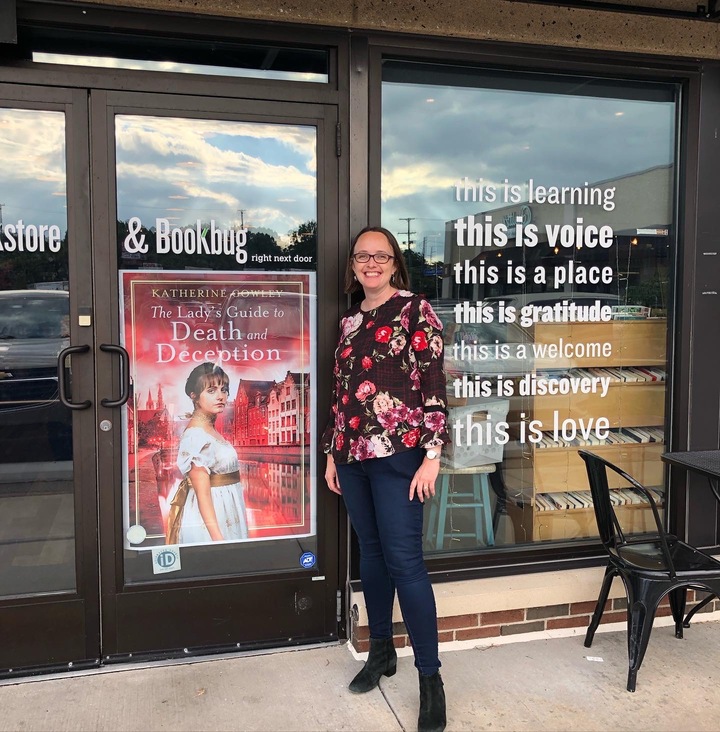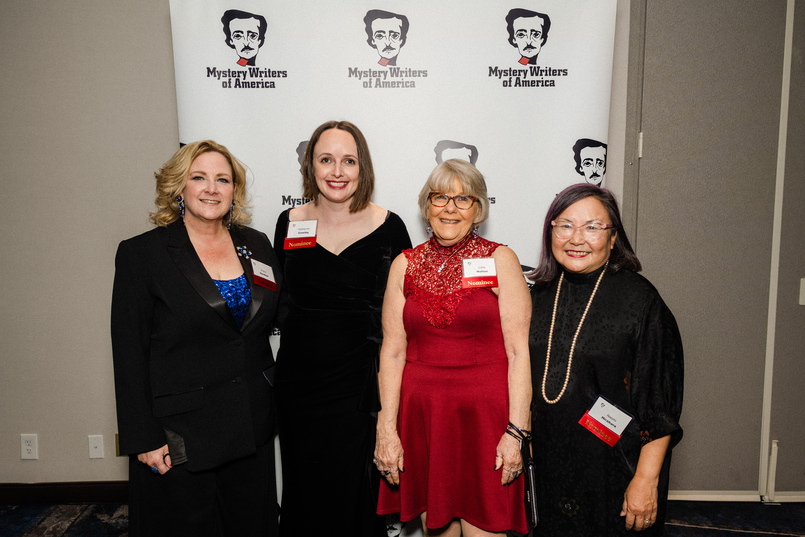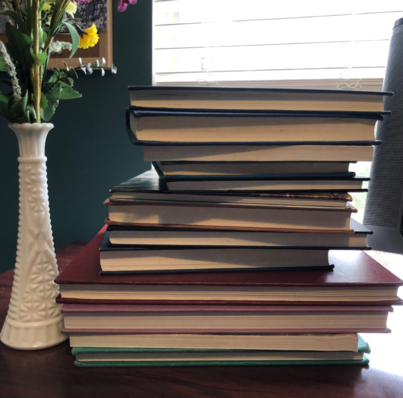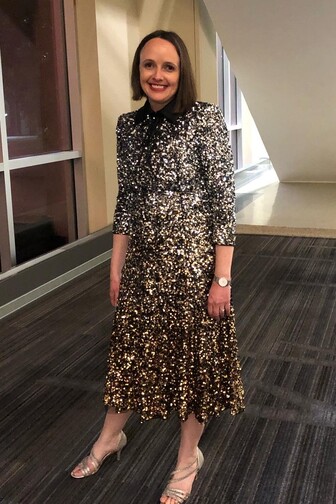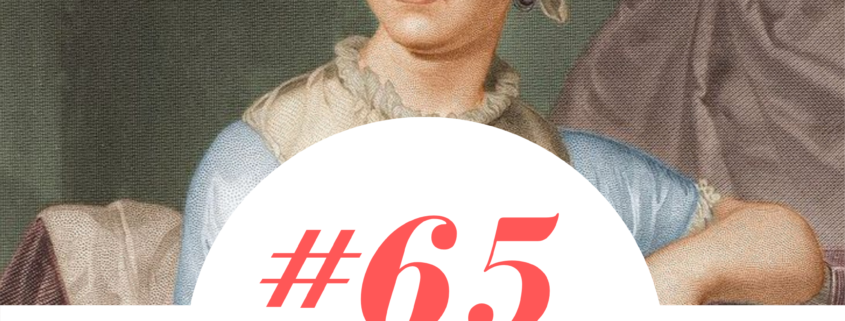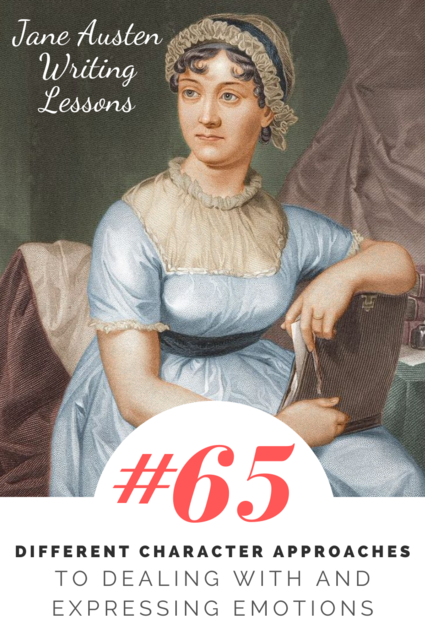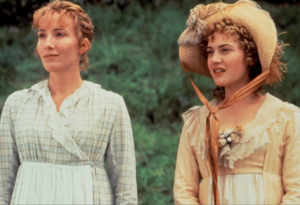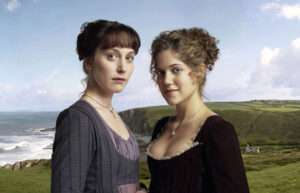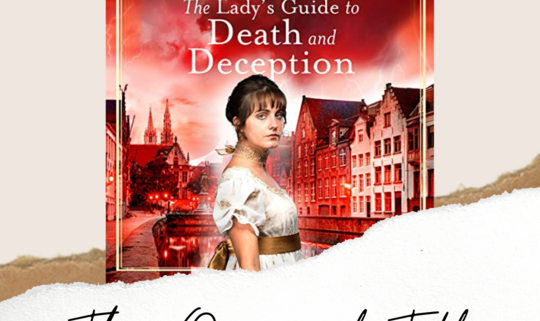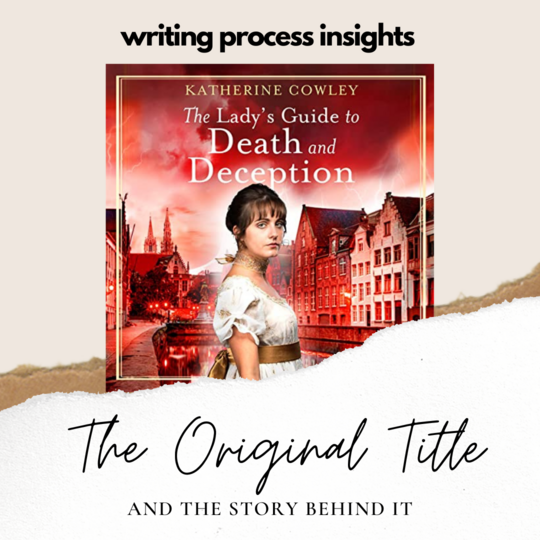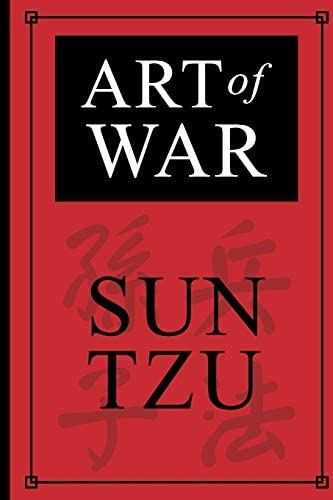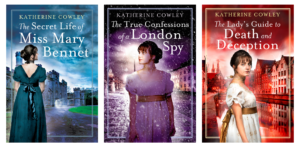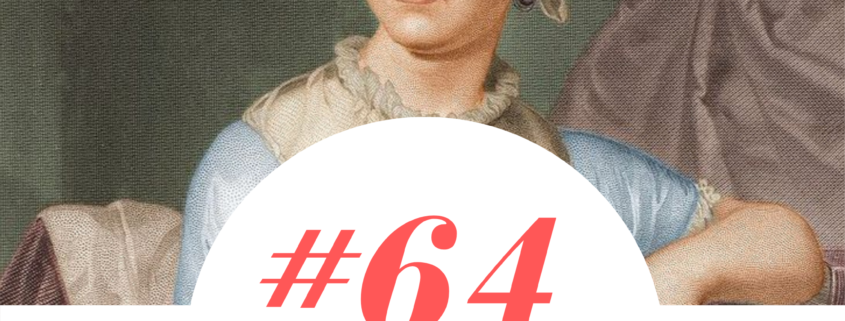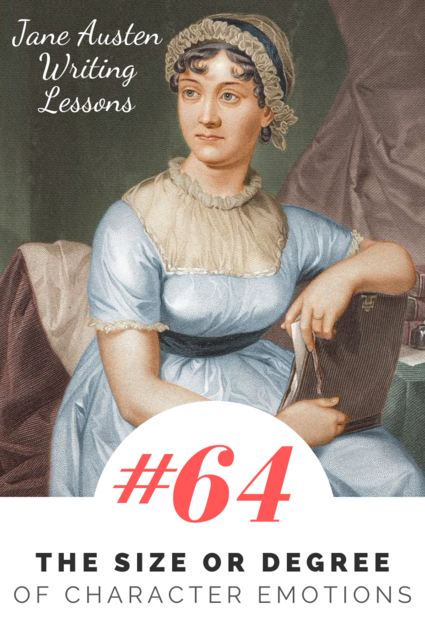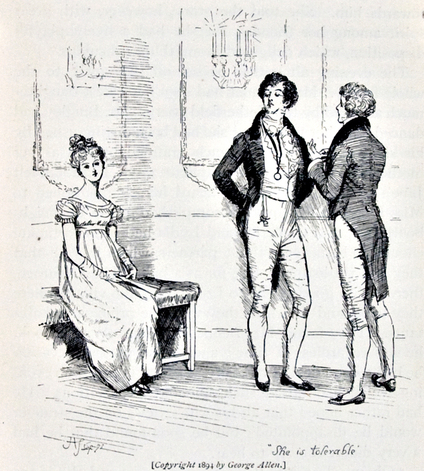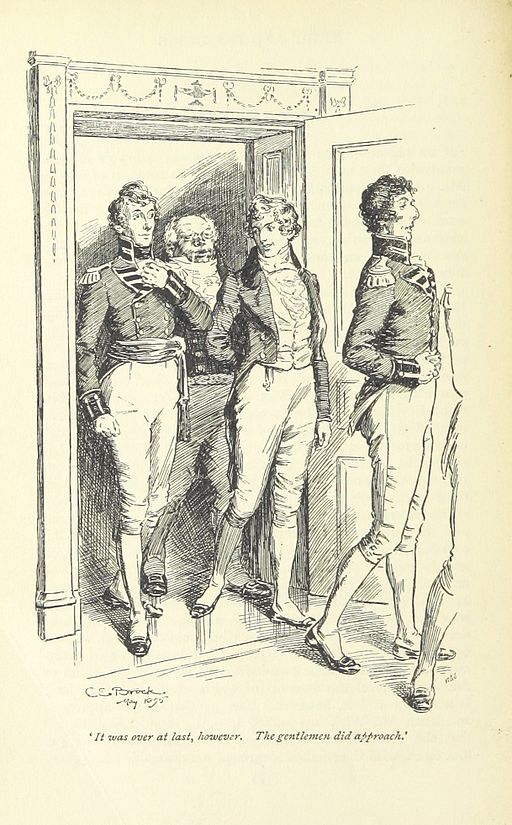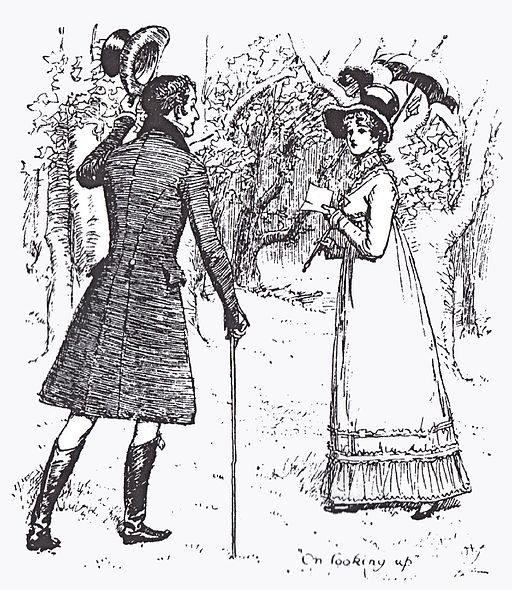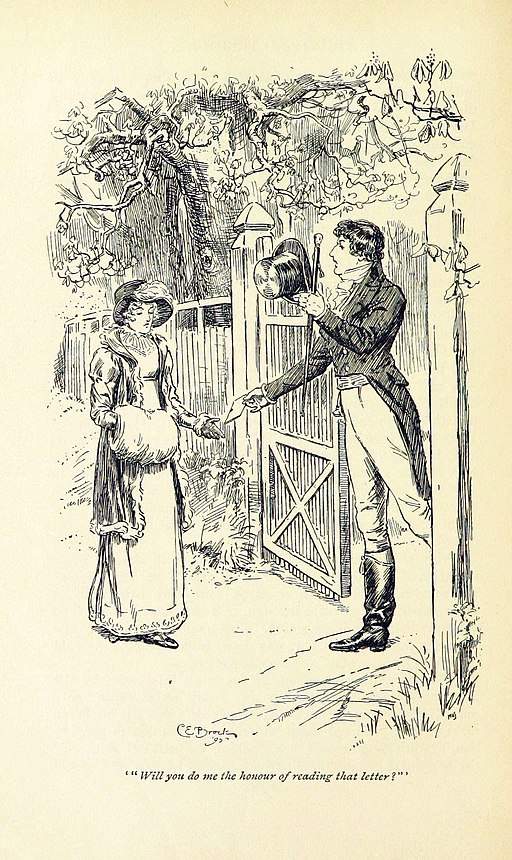Mary Bennet and Mr. Collins
In Jane Austen’s novel, Pride and Prejudice, several of the characters make good matches, not just financially, but emotionally and romantically. Elizabeth marries Mr. Darcy, and Jane marries Mr. Bingley. Other matches are more complicated, like Lydia’s marriage to Mr. Wickham, and Charlotte Lucas’ marriage to Mr. Collins. In fact, many readers have wondered if Mary Bennet and Mr. Collins might not have been more suited for each other. Why didn’t Mr. Collins marry Mary Bennet? And if they had married, would it have been a good match?
It’s Jane Austen’s fault that these questions are asked, for she planted seeds for these speculations in the text. At the same time, she clearly demonstrates what led Mr. Collins to choose Charlotte Lucas as his bride rather than turning to Mary Bennet. Let’s look at the sequence of events, as conveyed in the book:
- Mr. Collins proposes to Elizabeth.
- Elizabeth turns down Mr. Collins.
- Mrs. Bennet congratulates Mr. Collins on his engagement to her daughter. He explains that she turned him down, but that he also believes that despite her refusal, Elizabeth actually intends to marry him.
- Mrs. Bennet attempts to convince her husband to force Elizabeth to marry Mr. Collins. When Mr. Bennet refuses to do so, she tries—and fails—to convince Elizabeth on her own.
- Charlotte Lucas comes to visit the Bennets and finds the house in an uproar. Mr. Collins shows Charlotte civility, and she politely pretends not to notice the hubbub about the failed marriage proposal.
- Mr. Collins spends the rest of the day trying to ignore Elizabeth, and spends much of the time talking to Charlotte Lucas: “the assiduous attentions which he had been so sensible of himself were transferred for the rest of the day to Miss Lucas, whose civility in listening to him was a seasonable relief to them all, and especially to her friend.”
- The next day, the Bennets eat dinner with the Lucases, and Charlotte is so kind as to entertain Mr. Collins. (Austen lets us know that Charlotte’s actual “object was nothing less than to secure [Elizabeth] from any return of Mr. Collins’s addresses, by engaging them towards herself.”)
- The next morning—his very last day visiting Meryton—Mr. Collins walks towards Lucas Lodge. Upon seeing him from the window, Charlotte contrives to “accidentally” run into him in the lane. Mr. Collins proposes to Charlotte, and Charlotte accepts.
An 1894 illustration by George Allen of Mr. Collins proposing to Charlotte Lucas with “so much love and eloquence.” (Image in public domain; accessed through Wikimedia Commons)
- That evening, after becoming engaged to Charlotte Lucas, Mr. Collins must say farewell to the Bennets. He does not inform them of his engagement, but he does offer them his gratitude, affections, and wishes of health and happiness, even making a point not to exclude Elizabeth. Then he informs them that he plans to return soon to Longbourn, and the narrator finally tells us how Mary Bennet feels about the whole affair:
With proper civilities, the ladies then withdrew; all of them equally surprised to find that he meditated a quick return. Mrs. Bennet wished to understand by it that he thought of paying his addresses to one of her younger girls, and Mary might have been prevailed on to accept him. She rated his abilities much higher than any of the others: there was a solidity in his reflections which often struck her; and though by no means so clever as herself, she thought that, if encouraged to read and improve himself by such an example as hers, he might become a very agreeable companion. But on the following morning every hope of this kind was done away. Miss Lucas called soon after breakfast, and in a private conference with Elizabeth related the event of the day before.
Poor Mary Bennet.
Unlike her sisters, she actually values Mr. Collins’ abilities—or at least, “rated [them] much higher” than her sisters did. She is often—key word, often—struck by the “solidity in his reflections.” She does not think he is as intelligent or clever as she is, but she sees in him potential. He could read and improve himself. Even if he is not truly agreeable now, “he might become a very agreeable companion.”
Alas, Mary admits her feelings to herself to late to act on them. And even if she had admitted her feelings for Mr. Collins earlier, she would be unlikely to actively and swiftly pursue him, as Charlotte Lucas does. It is Charlotte’s willingness to converse with Mr. Collins, and then her direct pursuit of him, that leads to their marriage.
In one of my favorite card games, Marrying Mr. Darcy, Charlotte Lucas starts the game with a score of three cunning, which is rather fitting. (In the game, none of other characters start with any cunning, though they can acquire it throughout the game.)
In Melissa Leilani Larsen’s fabulous stage version of Pride and Prejudice, Mary actually makes Mr. Collins a pudding, which she is about to give him when she is cast out of the room by her mother so that he can propose to Elizabeth. I saw a Zoom production of the play in early 2021, and the way Mary said “But he hasn’t tried my pudding” almost brought me to tears. In this adaptation, Mary’s realization of her feelings for Mr. Collins comes earlier, but still too late.
Now let’s dive into the text of Pride and Prejudice to consider seven arguments for why Mr. Collins should have married Mary Bennet, and seven arguments on why that would have been a bad idea.
Arguments for a happy union between Mr. Collins and Mary Bennet, aka, why he should have married her
- Mary is interested in Mr. Collins, sees his positive qualities, and believes he could become an agreeable companion—and is not interest a base upon which something more substantial can be built?
- Mr. Collins doesn’t really care which sister he marries. He transfers his interest easily from Jane to Elizabeth upon a gentle nudge from Mrs. Bennet. Mary is also a Bennet sister! Could he not shift his interest to her?
“Mr. Collins meant to choose one of the daughters.” A humorous 1894 illustration of the five sisters, one of whom Mrs. Bennet has marked as unavailable, by Hugh Thomson. (Source: Wikimedia Commons, Creative Commons license.)
- They have similar speaking habits: Mr. Collins like to wax eloquently about any subject, and Mary likes to make profound statements on life. Neither individual is as clever, intelligent, or witty as they think themselves.
During a dinner conversation, Mr. Collins mentions that he frequently compliments Lady Catherine de Bourgh and her daughter.
Mr. Bennet says:
“It is happy for you that you possess the talent of flattering with delicacy. May I ask whether these pleasing attentions proceed from the impulse of the moment, or are the result of previous study?”
Mr. Collins replies with one of the best lines from the novel:
“They arise chiefly from what is passing at the time; and though I sometimes amuse myself with suggesting and arranging such little elegant compliments as may be adapted to ordinary occasions, I always wish to give them as unstudied an air as possible.”
Both Mr. Bennet and Elizabeth find his reply pleasingly absurd.
Earlier in the novel, after the Meryton assembly, Elizabeth is complaining of Mr. Darcy’s behavior to her sisters and Charlotte Lucas. Elizabeth says,
“I could easily forgive his pride, if he had not mortified mine.”
Mary immediately gives a long speech on pride, which, while it contains some insights, does not truly add to the conversation:
“Pride,” observed Mary, who piqued herself upon the solidity of her reflections, “is a very common failing, I believe. By all that I have ever read, I am convinced that it is very common indeed; that human nature is particularly prone to it, and that there are very few of us who do not cherish a feeling of self-complacency on the score of some quality or other, real or imaginary. Vanity and pride are different things, though the words are often used synonymously. A person may be proud without being vain. Pride relates more to our opinion of ourselves; vanity to what we would have others think of us.”
No one acknowledges Mary’s statement, nor does it shift anyone’s views on the subject at hand.
- Neither Mr. Collins nor Mary completely fit into society. Both have trouble understanding and behaving appropriately in social situations, such as when Mr. Collins introduces himself to Mr. Darcy at the ball, and, at the very same ball, Mr. Bennet must stop Mary from performing on the pianoforte. Mary seems to have an innate social awkwardness and lack of awareness, and Mr. Collins’ deficits are caused, at least in part, by his upbringing and education.
- Mary is bookish, and Mr. Collins likes reading religious tracts and books.
- Mr. Collins is a clergyman, and Mary cares deeply about moral values.
- They are both judgmental. After Lydia runs away with Wickham, Mary declares,
“Loss of virtue in a female is irretrievable, that one false step involves her in endless ruin, that her reputation is no less brittle than it is beautiful, and that she cannot be too much guarded in her behaviour towards the undeserving of the other sex.”
And in a letter, Mr. Collins writes,
“The death of your daughter would have been a blessing in comparison of this.”
Ouch. That’s harsh.
As we consider these seven reasons, we find ourselves asking:
What better foundation for marriage is there than social ineptitude, bookishness, and a healthy dose of self-righteousness?
Mary and Mr. Collins do share some fundamental values, and both relate to people in a distinctive way. And this could be enough to argue that they would be well suited.
In Jack Caldwell’s novel The Companion of His Future Life, Mr. Collins does marry Mary Bennet. While the novel still focuses on the stories of Elizabeth and Jane, we see a fair bit of Mary, and both she and Mr. Collins seem quite satisfied with their choice. As a result of their marriage, Mary grows in new ways. She does not let Lady Catherine de Bourgh control her life, and goes behind her back to become close friends with Anne de Bourgh.
Arguments against a happy union between Mr. Collins and Mary Bennet, aka, why it’s a good thing he married Charlotte Lucas
- Being similar does not actually mean you are suited. Were they to marry, their similarities could cause them trouble in the future, particularly since they both struggle in social situations.
- Mr. Collins is actually a lot less bookish than Mary. He’s not as well read, and even Mary, with her inability to see how to apply her knowledge, can see that he is lacking in this area:
Though by no means so clever as herself, she thought that, if encouraged to read and improve himself by such an example as hers, he might become a very agreeable companion.
- Mr. Collins needs someone to manage him. He already follows Lady Catherine de Bourgh’s every suggestion. After his marriage to Charlotte, she helps him restrain some of his less-desirable tendencies in ways that make her life better:
To work in his garden was one of his most respectable pleasures; and Elizabeth admired the command of countenance with which Charlotte talked of the healthfulness of the exercise, and owned she encouraged it as much as possible.
Would Mary be able to do this in the same subtle yet effective manner? It is likely that she’d choose a different, more direct tact. Yet some of the reason Charlotte and Mr. Collins’ marriage works is because he does not feel any friction. At the end of Elizabeth’s six-week visit, Mr. Collins says:
“Only let me assure you, my dear Miss Elizabeth, that I can from my heart most cordially wish you equal felicity in marriage. My dear Charlotte and I have but one mind and one way of thinking. There is in everything a most remarkable resemblance of character and ideas between us. We seem to have been designed for each other.”
Unlike Charlotte, Mary is not strategic in being tactful, and Mary would likely directly tell Mr. Collins if she disagreed with him. This would create a very different marriage, one with the potential for conflict.
- Even after his marriage, Lady Catherine is the most important person in Mr. Collins’ life. Charlotte is willing to praise Lady Catherine, be quiet during large portions of meals with her, and ignore any difficulties she causes in her life.
While it’s possible Mary could do the same (and in Caldwell’s novel, she not only does that, but also manages to subtly influence Lady Catherine in ways that help her meet her own goals), it’s just as possible that Mary would follow the path of Elizabeth and state her mind to Lady Catherine. When Elizabeth speaks up to Lady Catherine, it causes great consternation on the part of Mr. Collins, and he would likely be even more upset if it were his wife disagreeing with her.
- Mary wants Mr. Collins to change (“to read and improve himself”). Could Mr. Collins change in a way that would suit Mary?
In her novels, Jane Austen is open to the idea of people changing, but this change generally happens before marriage. For instance, inspired by Elizabeth’s critique, Mr. Darcy lets go of his pride:
“I have been a selfish being all my life, in practice, though not in principle. As a child I was taught what was right, but I was not taught to correct my temper. I was given good principles, but left to follow them in pride and conceit….Such I was, from eight to eight-and-twenty; and such I might still have been but for you, dearest, loveliest Elizabeth! What do I not owe you!”
- A large part of Charlotte and Mr. Collins’ marital harmony is due to Charlotte’s ability to ignore that which she doesn’t like in her husband. When Elizabeth visits, she watches their interactions:
When Mr. Collins said anything of which his wife might reasonably be ashamed, which certainly was not seldom, she involuntarily turned her eye on Charlotte. Once or twice she could discern a faint blush; but in general Charlotte wisely did not hear.
Being able to largely ignore the little bothers in each other is of great service to other relationships as well (Mr. Bennet must do the same for Mrs. Bennet). This is something Mary would need to learn.
- Mary’s interests thus far have been to devote as much time to her studies and the piano as possible. She seems ill-prepared to manage a household, while Charlotte is ready and willing to do so. Mary would need to develop those skills and, by necessity of not having many servants, would need to take time from her books and devote herself to running a house. This is something she would need to learn if she ever marries anyone. But because it is something Charlotte already has mastered, and that she finds intrinsic value in, this is a source of joy for her.
When Elizabeth leaves after her six week visit, she reflects:
Poor Charlotte! it was melancholy to leave her to such society! But she had chosen it with her eyes open; and though evidently regretting that her visitors were to go, she did not seem to ask for compassion. Her home and her housekeeping, her parish and her poultry, and all their dependent concerns, had not yet lost their charms.
One of my favorite novels which explores Charlotte’s perspective, with its joys and struggles, is The Clergyman’s Wife. Even for Charlotte, even with her need for security, it is not an easy path.
In looking at these seven reasons, Mary seems ill-suited for Mr. Collins. Charlotte already has the perspective and the skills to make matrimony to Mr. Collins be as smooth as possible, while if Mary were to marry Mr. Collins, their path would be bumpy, at least at the start.
Reflections on Marriage: What we can learn from the marriages that did and did not occur
Any marriage requires give and take, and if the marriage of Mr. and Mrs. Bennet is a good indication, there are plenty of workable marriages in which the two individuals are not particularly suited for each other. Whether or not the pros outweigh the cons, or the cons outweigh the pros, ultimately Mary Bennet and Mr. Collins could have had a tolerable, successful, or perhaps even joyful marriage.
Regardless of whether they would have been suited for each other, Charlotte took the initiative and as a result, married Mr. Collins. From a story standpoint, this is powerful, because while Elizabeth doesn’t think highly of Mary’s life philosophies, Charlotte Lucas is her close friend. Charlotte and Mr. Collins’ engagement shakes Elizabeth.
When speaking to her sister Jane of Charlotte’s impending marriage, Elizabeth declares:
“It is unaccountable! in every view it is unaccountable!”
“My dear Lizzy, do not give way to such feelings as these. They will ruin your happiness. You do not make allowance enough for difference of situation and temper. Consider Mr. Collins’s respectability, and Charlotte’s prudent, steady character. Remember that she is one of a large family; that as to fortune it is a most eligible match; and be ready to believe, for everybody’s sake, that she may feel something like regard and esteem for our cousin.”
“To oblige you, I would try to believe almost anything, but no one else could be benefited by such a belief as this; for were I persuaded that Charlotte had any regard for him, I should only think worse of her understanding than I now do of her heart. My dear Jane, Mr. Collins is a conceited, pompous, narrow-minded, silly man: you know he is, as well as I do; and you must feel, as well as I do, that the woman who marries him cannot have a proper way of thinking. You shall not defend her, though it is Charlotte Lucas. You shall not, for the sake of one individual, change the meaning of principle and integrity, nor endeavour to persuade yourself or me, that selfishness is prudence, and insensibility of danger security for happiness.”
Later, when Elizabeth visits Charlotte and Mr. Collins, she comes to accept—perhaps even understand—Charlotte’s choice, despite knowing that she would never have been able to make such a choice herself. She thinks, “Poor Charlotte!,” but her anger for her friend’s choice has been replaced by melancholy.
Elizabeth does not adopt Charlotte’s outlook on life—if she had, she would have accepted Mr. Darcy’s first proposal, despite her dislike of him.
Mr. Collins and Charlotte’s marriage acts as a foil to Elizabeth’s ultimate decision to marry Mr. Darcy. Yet it also influences Elizabeth, and helps her have a more expansive perspective on life.
If Mary had married Mr. Collins, it would have been less likely to change Elizabeth in any significant way.
My Personal Stance
While I can understand the opposing perspective, personally, I don’t think that Mr. Collins and Mary would be particularly happy together. When I wrote my own continuation of Mary’s story, a trilogy which begins with The Secret Life of Miss Mary Bennet, I didn’t give Mary a romance in the first book, because I didn’t think she was ready for marriage. I felt like she needed to grow and develop, and figure out herself first, before she would be ready for a relationship. However, in the very first chapter, she does reflect on the fact that she did not have the opportunity to marry Mr. Collins: this is an event that has stuck with her and continues to influence her.
What do you think? Do you side with Jack Caldwell and others who see great potential in a Mary-Mr. Collins relationship? Or do you think that it would have been a bad choice for one or both of them? I’d love to hear your thoughts in the comments!
Note: sometimes I used affiliate links to Amazon and other websites. When that occurs, I may receive a small commission, but at no additional cost to you.
How and Why I Track My Writing Time (Using Toggl)
Since 2013, I have been tracking the time I spend writing. This has resulted in my glorious end of year posts, filled with charts on the number of hours I’ve spent, and calculations on exactly how long I spend on each stage of writing a book.
Every single time I post about the results of my time tracking, I get questions on how I track my time. So question no more: I’m about to tell you the hows and the whys of tracking my writing time.
First, Why I Track My Writing Time
I spent years not really writing consistently. While some writers can quite effectively write a couple times a month or year, for me this resulted in me writing 2-5 chapters of a number of stories and never finishing any of them.
Then a few things happened: I read the book The Power of Habit by Charles Duhigg, which helped me think about turning writing into a habit, I attended a book signing by Shannon Hale, where she recommended that writers write regularly, and I read a blog post by Susan Dennard on keeping a writing journal. Feeling all-around inspired, I began tracking my writing time.
In doing so I discovered:
- Writing new words is only one small aspect of my writing process. Research, outlining, revisions—these are all essential to my writing process.
- All the other writing-related things I work on help me as a writer and count as writing too. If I read a book on writing, attend a writing conference, or critique someone else’s writing, it builds my skills as a writer.
- I am a slow writer. While I still sometimes do it, tracking daily word counts can be discouraging, while tracking my writing time helps me see my progress.
- Tracking my writing time holds me accountable. I’m less likely to waste time browsing social media or procrastinating writing when I’m going to log my time.
How I Track My Writing Time
From 2014 to 2017, I tracked my writing time using a notebook/writing journal. Every day I would write down what I did and how much time I spent on it. Or, if I didn’t do anything, I had to write that down.
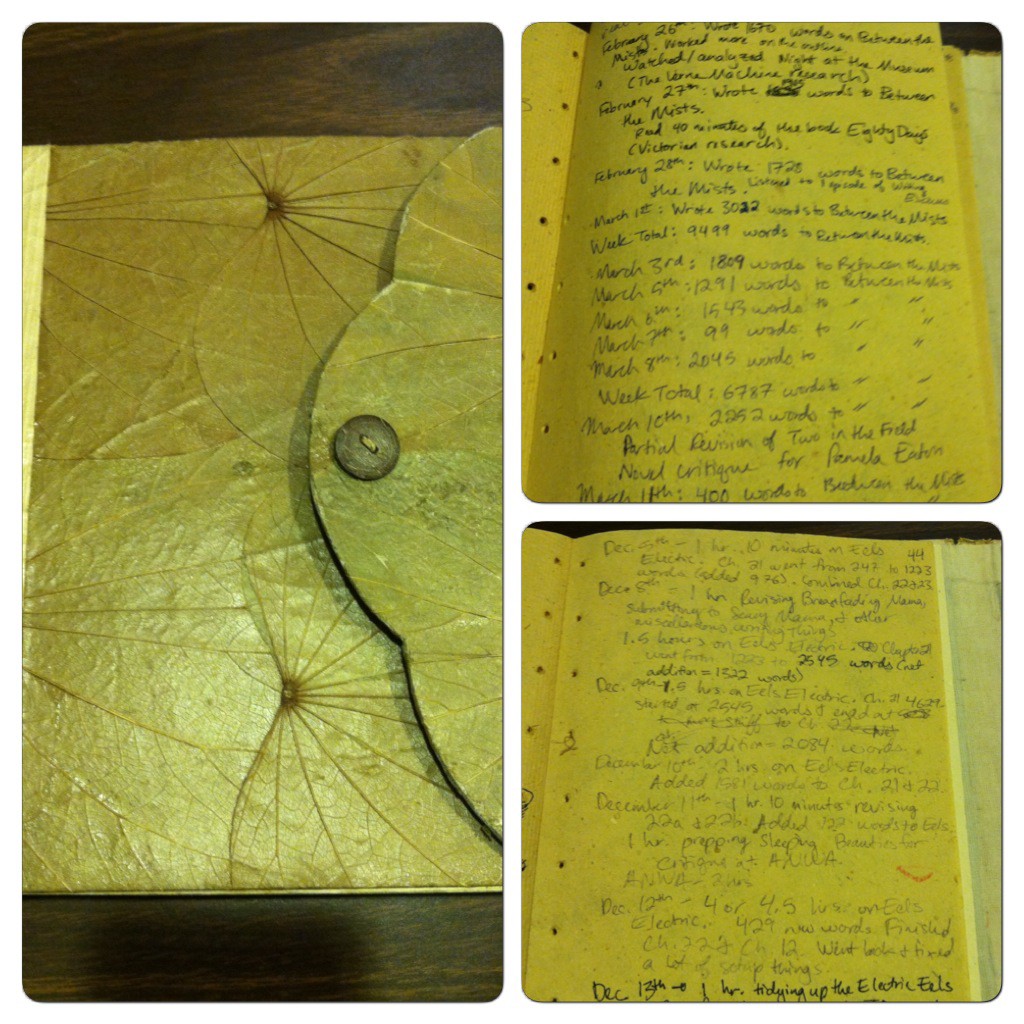
It was really motivating. And it also resulted in a lot of manual math at the end of each year to figure out how much time I spent writing.
Then in the summer of 2017, I moved, and during the move I lost that year’s writing journal. I also stopped tracking time and almost gave up writing. As one does. (Did I really want to be a writer? Do I really have what it takes to be a writer? Don’t we all stand in front of the mirror and ask that on occasion?)
But then I kept writing.
In 2018 I decided to take the plunge and use a digital option to track my time: Toggl Track. And I’ve absolutely loved it.
Toggl Track
Toggl Track is a time tracking app that you can use in a web browser and as an app. What I love about it is how much it allows you to customize in terms of categories, projects, and tags, and how you can easily generate reports. The basic plan (which I use) is free, though with the paid version you can do extra types of reports, save reports, do more with teams, etc.
While I personally love Toggl, there are lots of other good time tracking apps out there. However, regardless of what you decide to use, the conceptual approach I took to customizing Toggl may be useful to you.
The Big Picture Categories
Toggl’s structure uses big-picture categories which you can subdivide into smaller task.
For Toggl, the big picture category is called a Client.
I use clients to for the big-picture categories of how I spend my time:
- Development
- Marketing
- Personal Writing
- Submissions
- Each novel that I write becomes a big picture category (for example, “Mary Bennet,” “Mary Bennet Book 2,” “Mary Bennet book 3,” etc.)
While “client” is very much a business-oriented approach to looking at these bigger categories, it reminds me that I need to put time into each of these things. Developing my writing, doing personal writing, submissions—these are each things I can feed by putting time into them.
Depending on the year, I spend more or less on each category. For example, when I was searching for an agent, the “Submissions” category needed a lot more hours. Now it only takes a handful of hours, for the few short stories I submit to publishers each year.
Breaking Your Big Picture Categories into Projects
Big picture categories help me to focus on my big picture writing goals—the larger areas of how I spend my time. But to be really useful, I need to create individual projects for each larger category.
In Toggl, each client can be given as many “projects” as needed.
This is a pretty standard list of projects for one of my novels:
Each draft is a separate project. Research is a project. Outlining is a project. And apparently I accidentally created two separate newspaper research projects.
Here are the projects I created for my Development category:
These are each things that help me develop myself as a writer, or help me assist other writers on their own journeys.
Next, let’s look at the current projects in my Marketing category:
These projects are flexible—you can easily add new projects in a category or archive ones you no longer need. I need to retire the Book Reviews project, because I’m not using that at the moment. And “Twitter Outreach” needs to be combined with “Social Media,” because that’s how I’ve been logging it. (Note: I don’t log just any time I spend on Twitter and social media—that would be a slippery slope to doing more writing. Rather, I log things like creating book-related posts, participating in Twitter events like #momswritersclub, etc.)
Side Note: I haven’t done this, but with a paid subscription to Toggl you can get more granular and create Sub-Projects (projects within each of these projects, which are called Tasks).
Logging the Time: Descriptions and Tags
Once I have my big picture categories (clients) and projects set up to my satisfaction, I’m ready to time track.
On a web browser, this is what the Track view looks like.
I select the Project (with its client) that I am working on, I type in a description of what I’m doing, and then I press the start button.
Editing and Adding Missed Entries
There are plenty of times when I forget to press either the start or the stop button, or forgot to track my writing time entirely. But it’s really easy to fix. I click the + button to add a missed entry or I click on an entry’s attributes to edit them.
Tracking Word Count
There are a lot of dedicated word count trackers out there, and if you put a big focus on tracking your word count, you may want to use one of them.
Word count is not my focus, but I do track it when I’m writing a first draft. I just do this in Toggl. I write my total number of words written in the description, and then I add a tag for word count, to make it easy to sort for word count later in the reports.
I pulled up the word count tag for the first draft of my third Mary Bennet novel, The Lady’s Guide to Death and Deception, and you can see different amounts written on different chapters (and if you click on an entry, you can get more detailed information, like the date):
Other Views and Reports
One of my favorite parts of tracking my time is looking at the Week View. This helps me to see my progress over the course of the week, and what I’ve been working on.
In addition to sorting by project, you can also sort by your clients/big picture categories.
One of my other favorite reports is the Month View:
I like the month view for looking at my big-picture progress for the month. Over fifty hours on my current novel meant that I made lots of progress on the book. It also means that I didn’t let all my other types of writing tasks become more important than what I had selected as that month’s big goal.
Sorting for a Particular Client or Category (or for a Selection of Clients or Categories):
One of the most useful things about digital tracking is the ability to see more specific details about the time spent on just one segment of my writing time.
For example, I went to reports and set it for the year 2021. Then I selected three clients or big picture categories, “Mary Bennet,” “Mary Bennet Book 2,” and “Mary Bennet Book 3” so I could see the time spent that year on my entire Mary Bennet spy series.
I spent only 20 minutes on the first book in the series, 29 hours on the second book in the series, and 386 hours on the third book in the series.
However, this isn’t a full look at what I did on the series. The first Mary Bennet book was released in 2021, and I want to add in the time I spent related to marketing the book.
I leave the existing filters for the three Mary Bennet books, and then, under projects, I also select Mary Bennet Marketing:
This now gives me the full look at the time I spent both writing—and marketing—my Mary Bennet spy series during 2021.
As you can see, the time went up from 416 hours to 538 hours, because I spent 122 hours on marketing related tasks.
Moving Forward, One Hour at a Time
There’s so much that you can’t control about writing. You can’t control if your book will sell, or if it sells, if it will do well. There are ideas that have to be abandoned, periods of time where the creative well is dry and the muse has fled.
You can’t always even control how much time and energy you have to put towards writing. Life circumstances and other obligations can have a huge impact on what time you have to put toward writing. If this year continues in the way that I expect, I will likely have less time to spend writing this year than I spent writing in 2022.
But what I like about time tracking is that it helps me recognize how I’m spending the writing time that I have. Every hour I put towards my writing is a step forward—it’s a recognition is that I’m bringing my stories and dreams to life.
Have you tried tracking time or word count? Does it work for you? Do you a similar method, or do you use a different method? I would love to hear in the comments!
Big Mary Bennet Energy: 2022, A Year in Review
And now, as we reach the final day of 2022, it is time for my annual writing year in review.
I spent 937 hours writing in 2022, and my year looks like a series of waves.
Due to a variety of outside factors, my writing time varied from 47 to 109 hours each month, but it did so in an aesthetically pleasing way, which is definitely a win.
(Note: 937 hours is less time than I spent writing in 2021, when I wrote for 1000 hours, but more than I spent writing in any previous year.)
Which leads us to the next chart: how did I spend my time?
This year had big Mary Bennet energy, and that determined a lot of my writing hours. True, I only spent 32 hours doing final revisions on my third Mary Bennet novel. But the second and third books in the Mary Bennet spy series were both released:
The True Confessions of a London Spy in March 2022
The Lady’s Guide to Death and Deception in September 2022
I had my launch party for The Lady’s Guide to Death and Deception at This is a Bookstore/Bookbug in Kalamazoo, MI.
It was exciting to have these books released in close proximity, because then readers could enjoy the full story arc without having to wait very long. As you’d expect, two book releases takes up a lot of time, and I spent 309 hours on everything from my website to guest blog posts to presentations to marketing tasks.
This year was also thrilling for the first book in the series, The Secret Life of Miss Mary Bennet, which had several award wins and nominations:
-Winner of the LDSPMA Praiseworthy Award for Best Suspense/Mystery novel
-One of five nominees for the Mary Higgins Clark Award
At the Edgar Awards: me with three of the other finalists for the Mary Higgins Clark Award
-One of five finalists for the Whitney Award for Best Mystery/Suspense novel
The Big Question: Will we see more of Mary Bennet?
I have had so many readers finish the third book and ask, “Will we see more of Mary Bennet?” Others have asked if I will write a Kitty Bennet series.
The series was originally conceived as a trilogy. I wanted it to feel complete and have a satisfying resolution for Mary (and company) by the end of the third book.
However, there are other stories that I would love to tell about Mary and her sisters. So I think it’s fair to say that there will very likely be more books in Mary and/or Kitty’s futures.
That said, I have been working on this series non-stop from 2017 to 2022. Five full years. That’s a lot of time to spend in one story world, with one set of characters. A book takes me at least a year or two to write, and it’s very all-consuming. So I decided that the time had come to work on a brand new murder mystery.
The New Murder Mystery:
I’m still keeping this largely under wraps, but I will say that my new murder mystery is set in Paris in the late 1800s, with a number of fascinating historical figures. The main character of the book is a determined woman in her thirties trying to make her way in the world. But then there is a theft and a murder, and she is drawn into solving the mystery.
I spent 227 hours on this book in 2022. While I had to do a lot of research for the Mary Bennet novels, I already had a strong background on Jane Austen and Regency England. I did not have that same background for my new murder mystery, so I’ve had to do a lot of additional research on everything from politics to architecture. Fortunately, I love research. One thing I didn’t count towards writing time was studying French. I’m fluent in Portuguese, and reading Portuguese definitely helps with reading French, but knew I needed to study French itself to help me read some of the sources (including newspapers and a few biographies) that are only available in French.
A few of the research books I’ve read for my current novel
While I love research, one cannot research forever. One of the things that I am most happy about for this year is that I found my main character’s voice, I found my narrator voice, and I found the voices of many of my other characters.
I’m now at the 60% mark on the first draft. In the new year, I plan to finish the first draft and then revise, revise, revise.
What Else Counted as Writing:
There are endless other things that counted as writing this year, but here’s a few of note:
-Choosing out formal gowns. I rented dresses for both the Edgar Awards and the Whitney Awards, and I definitely counted the dress search as writing time. (Under my Development category, which includes all writing and career development.)
My dress for the Whitney Awards. Both my dress for the Edgars and the Whitneys were from Rent the Runway.
-I ran a successful Kickstarter for a writing nonprofit and helped publish an anthology.
-I abandoned a novel. I went back and began another revision on an old mystery novel I wrote in the mid-2010s. And then I decided it’s not the right book, so I am officially abandoning it. We’re all better off.
-I wrote 17 new Jane Austen Writing Lessons, focusing on what Jane Austen can teach us about writing dialogue and writing emotions.
-I worked on a few short stories. And I had two short stories published, both with a bit of a religious bent: “The Gift of Undoing” in Saints, Spells, and Spaceships, and the darkest story I’ve ever written, “Burdens,” in Irreantum.
My Writing Plans for 2023:
I have a number of goals, including setting up bookstore and library visits (note: if you’re a bookseller or librarian, I am available for both in-person and virtual visits).
Mostly though, I’m going to buckle down and write, so you can read more of my short stories and novels in the future.
#65: Different Character Approaches to Dealing With and Expressing Emotions
Jane Austen’s Sense and Sensibility focuses on two sisters, Elinor and Marianne, who act as foils to each other. They see the world differently; they treat relationships differently; Elinor places more value on reason while Marianne places more value on feelings and sensibility. One of the most stark contrasts between the two sisters is how they deal with their emotions and how they express them to others.
Elinor and Marianne, as depicted in the 1995 film version of Sense and Sensibility
Both Elinor and Marianne experience similar loss: they are both separated from and hurt by the men they love.
When Willoughby leaves Marianne, she has a very dramatic response, and suffers “violent affliction.” Her emotions become less violent, but they continue to be marked by outward pining and despair. She becomes very inwardly focused, not noticing the needs or circumstances of those around her, and she makes a scene at a London ball when she sees Willoughby. After he marries someone else, goes out in bad weather and becomes deathly ill.
When Elinor discovers that Edward Ferrars is secretly engaged to Lucy Steele (through Lucy confiding in her), she suffers intense pain, but she refuses to outwardly show it to Lucy. And then she continues to mask her emotions with her family, even though doing so pains her. She knows that Marianne is suffering, and she doesn’t want to add any more burdens to her family by sharing her own suffering; furthermore, she is bound by a promise she has made to Lucy Steele, and because of that promise she does not know how to share her pain with those closest to her. Yet because she is a point of view character, as readers we see and understand her suffering and her internal angst.
Elinor and Marianne, as depicted in the 2008 Sense and Sensibility miniseries
These two characters react to similar situations differently because of their contrasting personalities and because of different outside circumstances. In addition to considering how the same character will express small, medium, and large emotions differently, writers should consider how different characters deal with and express their emotions.
Later, when it becomes public knowledge that Edward is engaged to Lucy Steele, Marianne is in complete shock. But she notices that her sister is not surprised.
“How long has this been known to you, Elinor? has he written to you?”
“I have known it these four months. When Lucy first came to Barton Park last November, she told me in confidence of her engagement.”
At these words, Marianne’s eyes expressed the astonishment which her lips could not utter. After a pause of wonder, she exclaimed—
“Four months!—Have you known of this four months?”
Elinor confirmed it.
“What! while attending me in all my misery, has this been on your heart? And I have reproached you for being happy!”
“It was not fit that you should then know how much I was the reverse!”
“Four months!” cried Marianne again. “So calm! so cheerful! How have you been supported?”
Marianne struggles to understand how Elinor’s outward reality could be in such contrast to her inward reality, because for Marianne, her inward and outward realities are typically aligned.
To Marianne’s question, Elinor responds:
“By feeling that I was doing my duty.—My promise to Lucy, obliged me to be secret. I owed it to her, therefore, to avoid giving any hint of the truth; and I owed it to my family and friends, not to create in them a solicitude about me, which it could not be in my power to satisfy.”
Marianne seemed much struck.
“I have very often wished to undeceive yourself and my mother,” added Elinor; “and once or twice I have attempted it;—but without betraying my trust, I never could have convinced you.”
“Four months! and yet you loved him!”
“Yes. But I did not love only him; and while the comfort of others was dear to me, I was glad to spare them from knowing how much I felt. Now, I can think and speak of it with little emotion. I would not have you suffer on my account; for I assure you I no longer suffer materially myself. I have many things to support me. I am not conscious of having provoked the disappointment by any imprudence of my own, I have borne it as much as possible without spreading it farther.”
Elinor goes on to tell Marianne how she has forgiven Edward and does not blame him. Then she says:
“Edward will marry Lucy; he will marry a woman superior in person and understanding to half her sex; and time and habit will teach him to forget that he ever thought another superior to her.”
Marianne cannot accept that her sister could reach such a point if she truly and fully loved Edward:
“If such is your way of thinking,” said Marianne, “if the loss of what is most valued is so easily to be made up by something else, your resolution, your self-command, are, perhaps, a little less to be wondered at.—They are brought more within my comprehension.”
But Elinor will not accept Marianne’s judgment. She rebukes Marianne, in essence saying that she has loved and felt as deeply as Marianne:
“I understand you. You do not suppose that I have ever felt much. For four months, Marianne, I have had all this hanging on my mind, without being at liberty to speak of it to a single creature; knowing that it would make you and my mother most unhappy whenever it were explained to you, yet unable to prepare you for it in the least. It was told me,—it was in a manner forced on me by the very person herself, whose prior engagement ruined all my prospects; and told me, as I thought, with triumph. This person’s suspicions, therefore, I have had to oppose, by endeavouring to appear indifferent where I have been most deeply interested; and it has not been only once; I have had her hopes and exultation to listen to again and again. I have known myself to be divided from Edward for ever, without hearing one circumstance that could make me less desire the connection. Nothing has proved him unworthy; nor has anything declared him indifferent to me. I have had to contend against the unkindness of his sister, and the insolence of his mother; and have suffered the punishment of an attachment, without enjoying its advantages. And all this has been going on at a time, when, as you know too well, it has not been my only unhappiness. If you can think me capable of ever feeling, surely you may suppose that I have suffered now. The composure of mind with which I have brought myself at present to consider the matter, the consolation that I have been willing to admit, have been the effect of constant and painful exertion; they did not spring up of themselves; they did not occur to relieve my spirits at first. No, Marianne. Then, if I had not been bound to silence, perhaps nothing could have kept me entirely—not even what I owed to my dearest friends—from openly showing that I was very unhappy.”
Marianne was quite subdued.
“Oh! Elinor,” she cried, “you have made me hate myself for ever.—How barbarous have I been to you!—you, who have been my only comfort, who have borne with me in all my misery, who have seemed to be only suffering for me!—Is this my gratitude?—Is this the only return I can make you?—Because your merit cries out upon myself, I have been trying to do it away.”
This is a powerful scene between the two sisters, in part because their different approaches to dealing with and expressing emotions requires them to reconcile with each other.
When writing character emotions, it’s important to remember that there is a full range of ways a character can react to the same event: a more dramatic, outward expression or a quieter, more internal expression could both be used for either large or small emotions. A more “emotional” character, like Marianne, does not actually have more emotions—they simply express them in a different manner. It is important to note, however, that the way a character chooses to express their emotions does have consequences: Marianne pining for months does have negative effects on her well-being, and prevents her from dealing with her emotions and facing the truth about Willoughby.
There are a full range of possibilities responses in between these two opposite approaches: there are endless ways a character might deal with or express their emotions. There is no guide, no rule on whether your character should express emotions in a big or small manner, an internal or an external way: this is something you have to choose for each character, and this choice will reveal a lot about the individual and their circumstances.
Exercise 1: Write a scene with two characters. They can be siblings, friends, coworkers, or have something else that ties them together and creates similarities between them. In the scene, have something negative happen to both of the characters. The two characters should deal with and express their emotions in different ways (they do not need to be polarly opposite in their reactions, but they can be).
Exercise 2: Write a second scene with two characters with something in common—they can be the same characters from exercise 1, or new characters. In this scene, have something positive happen to both of the characters. Once again, have the characters deal with and express their emotions in different ways.
Exercise 3: Choose a handful of people in your life that you know well or interact with on a regular basis. For each person, write a several sentence sketch about how they deal with and express their emotions.
Then reflect on the differences between these people, and how their reactions are impacted by their personalities and circumstances.
The Original Title for The Lady’s Guide to Death and Deception
I told this story at my launch party in Kalamazoo, Michigan, but I wanted to share it here. The original, working title for The Lady’s Guide to Death and Deception was The Lady’s Guide to the Art of War.
In late 2019, my agent Stephany Evans was preparing submission materials for the first book in the series, The Secret Life of Miss Mary Bennet. Now, when you are pitching a book, even if you would like it to be the first book in a series, you often say, “It’s a standalone novel with series potential.” Publishers sometimes just want one book, and you want them to be interested in the book without them feeling like the book is incomplete and requires a series. And indeed, the first book does stand on its own. But “series potential” means you have further books in mind. In case a publisher was interested in the sequels, Stephany asked me to create a several sentence pitch—with a title—for books 2 and 3.
I had already written a first draft for the second book, which made it much easier to settle on possible titles. After a bit of brainstorming, I ended up settling with The True Confessions of a London Spy, which ultimately ended up being the final title for the book.
Book three was trickier. I knew that it would be set in Brussels. I knew that the book would include Napoleon Bonaparte and the hundred days from when he escaped the Isle of Elba and was defeated one final time. I also knew the book would include a romance, and feature Mary’s sister Lydia. I had enough that I could write a pitch. One of the themes that I knew would be present in the book was war—how war impacts individuals and communities. War is played out not just on the battlefield, but in smaller interactions with huge consequences. And so I came up with the title, The Lady’s Guide to the Art of War.
I have a history with the book The Art of War. We had a copy in my house growing up, and we would discuss Sun Tzu and other military theorists at the dinner table or after watching movies. I got engaged to my husband, Scott, a few weeks before Christmas, and for Christmas that year, my dad gave Scott a beautiful knife from Spain and a copy of The Art of War. Which from my dad is a very excited “Welcome to the family!”
When I got to writing the book, I didn’t draw upon The Art of War as heavily as I thought I would. Its influence is definitely in the book, and Napoleon Bonaparte and the Duke of Wellington likely owned copies and would’ve been quite familiar with it. Mary and Mr. Withrow do discuss The Art of War in one scene, but I realized that it wasn’t quite the right title for the overall themes and focus.
So it was back to the drawing board. I spent hours brainstorming other titles, and after some really useful thoughts and perspectives from my editor, I settled on The Lady’s Guide to Death and Deception. What I loved about the title is it captures what Mary must face—deception on the part of others, and the deception she must use in order to unravel the mystery and deal with death. I sent the title in, it was approved by the publisher, and it became the final title for the book.
The book is dedicated to my dad, and despite not including The Art of War in the title, it has a lot of his influence. He helped me choreograph every single action scene in the entire series. I would video call him and say, “I need these things to happen, without these things happening, and this is who the characters are and their skills and strengths,” and he would help me figure it out. After I wrote the scenes, I would send them to him for further feedback.
Titles tend to either come to me easily or they are really difficult and take a lot of work. There is no in-between. But I have been really happy with all my titles so far, and hopefully that’s the case in the future!
#64: The Size or Degree of Character Emotions
When we talk about emotions in writing, we often think of big emotions, when characters are very emotional and emotive.
Yet characters experience not only a broad range of types of emotions, but a broad range of sizes of emotions. Characters have emotions that are strong or overwhelming, but they also have emotions that are fleeting and less consequential.
When considering the size of the emotion, it’s useful to ask:
- To what degree does your character experience this emotion?
- How important is this emotion to the story?
- How many emotional clues need to be planted to convey this emotion?
In Pride and Prejudice, Elizabeth experiences emotions in every scene—and in most scenes, she experiences more than one emotion. Let’s look at how Jane Austen conveys small emotions, mid-size emotions, and large emotions for this character.
Small Emotions
Small emotions are ones that the character experiences either for a short time, or only to a small degree. This might a small annoyance, a temporary flush of joy, a reaction to another character or something that happened.
While attending the Meryton Assembly, Elizabeth overhears Mr. Bingley trying to convince Mr. Darcy to dance, and Bingley points out that Elizabeth could be a good partner. Mr. Darcy replies:
“She is tolerable; but not handsome enough to tempt me.”
1894 illustration from Pride and Prejudice by Hugh Thomson, via Lilly Library, Indiana University, Wikipedia Commons
While this is a rather weighty insult, Elizabeth has only a small emotional response:
Mr. Darcy walked off; and Elizabeth remained with no very cordial feelings towards him. She told the story however with great spirit among her friends; for she had a lively, playful disposition, which delighted in any thing ridiculous.
Clearly she’s not happy with Darcy, but rather than wallowing in the emotion, she sees it as ridiculous and tells it as a funny story.
Throughout Pride and Prejudice, Elizabeth often uses humor as a lens to deal with small emotions. For some character, this event could create a much larger emotional response, but for Elizabeth it remains small, and she moves on.
It is a key emotional moment for the reader–one of the most memorable moments in the novel, that sets up their antagonism–but it doesn’t require very much space on the page.
At other times emotions are implied or are barely brushed upon. It’s important for the reader to understand what the character’s emotion is, but it’s a small emotion that needs only a small amount of space.
For example, after Mr. Collins’ arrival, he starts showering compliments on the family:
He had not been long seated before he complimented Mrs. Bennet on having so fine a family of daughters, said he had heard much of their beauty, but that, in this instance, fame had fallen short of the truth; and added, that the did not doubt her seeing them all in due time well disposed of in marriage.
And then, Austen gives us the emotional response of Elizabeth and her sisters, in contrast to Mrs. Bennet’s response:
This gallantry was not much to the taste of some of his hearers, but Mrs. Bennet, who quarrelled with no compliments, answered most readily.
It’s a simple phrase—“not much to the taste of some of his hearers”—but it does all that is needed to do to establish Elizabeth’s sentiments towards her cousin.
1894 illustration by Hugh Thomson from Pride and Prejudice. Jane, of course, is “Not for Sale,” but Mr. Collins is welcome (according to Mrs. Bennet) to choose any of the other daughters. Image via Wikimedia Commons.
Mid-Size Emotions
Mid-size emotions are ones that are larger for the character. They occupy more of the character’s heart and mind—they linger, have consequence, or are not as quickly resolved. They have a weightier impact on the character, and they often require more sentences on the page—more emotional clues.
In Pride and Prejudice, after Elizabeth and her sisters meet Mr. Wickham, Mr. Bingley and Mr. Darcy see them—and Mr. Darcy sees Mr. Wickham. Elizabeth witnesses their emotions, and has her own emotions (particularly her curiosity) piqued.
[Mr. Darcy’s eyes] were suddenly arrested by the sight of the stranger, and Elizabeth happening to see the countenance of both as they looked at each other, was all astonishment at the effect of the meeting. Both changed colour, one looked white, the other red. Mr. Wickham, after a few moments, touched his hat—a salutation which Mr. Darcy just deigned to return. What could be the meaning of it? It was impossible to imagine; it was impossible not to long to know.
Here, Elizabeth notes the interaction, and her questions and her longing to know show her curiosity.
Later on in the scene, we read:
As they walked home, Elizabeth related to Jane what she had seen pass between the two gentlemen; but though Jane would have defended either or both, had they appeared to be in the wrong, she could no more explain such behaviour than her sister.
Elizabeth comes back to her emotion, she comes back to her puzzlement and her curiosity by raising it with Jane.
Mid-size emotions often need either more emotional clues, or recur again at some point in the scene.
1895 illustration by C.E. Brock of the arrival of Mr. Wickham and other officers at a gathering held by the Phillips family. Via Wikimedia Commons.
It’s not long after this point when Mr. Wickham’s confides in Elizabeth, telling his story of how he has been wronged by Mr. Darcy. This revelation produces emotions in Elizabeth that are larger than the emotions she felt upon seeing their initial antagonism, but still mid-sized in comparison to some of her emotions in other scenes.
Elizabeth is shocked, and we see this shock and surprise in her speech:
“This is quite shocking!—He deserves to be publicly disgraced.”
In the scene that follows she then asks follow-up questions. She pauses when speaking. She reflects. She remembers things Mr. Darcy has said in the past that would seem to corroborate Wickham’s claims. These emotional clues are layered on each other, giving a sense of how she feels.
She also uses many more exclamation marks than in her normal dialogue, and uses strong word choice:
“How strange!” cried Elizabeth. “How abominable! I wonder that the very pride of this Mr. Darcy has not made him just to you! If from no better motive, that he should not have been too proud to be dishonest—for dishonesty I must call it.”
Even once her conversation with Mr. Wickham is over, she keeps returning to it in her mind. Her emotions on the matter, and on Mr. Wickham more generally, become her entire focus:
There could be no conversation in the noise of Mrs. Phillips’s supper party, but his manners recommended him to everybody. Whatever he said, was said well; and whatever he did, done gracefully. Elizabeth went away with her head full of him. She could think of nothing but of Mr. Wickham, and of what he had told her, all the way home; but there was not time for her even to mention his name as they went, for neither Lydia nor Mr. Collins were once silent.
And her emotions don’t end in this scene. The next chapter begins:
Elizabeth related to Jane the next day, what had passed between Mr. Wickham and herself.
Note how much more page time is given to this emotion than to when Mr. Darcy insulted her at the ball. Note how much more it consumes her—how it engages her in different ways and uses a larger variety of emotional clues.
Large Emotions
Large emotions are bigger for the characters. They are often more personal and have larger consequences. They can accompany events or knowledge which is life changing or life shattering. Often these emotions are large because the circumstances require the character to develop a new understanding of the world and their place in it.
Like with mid-size emotions, large emotions require more page time, a layering of emotional clues, and a return, multiple times, to the emotion. Large emotions also provoke stronger reactions, stronger or more extreme physical sensations, and lead the character to engage in behavior that is outside of their norm.
1894 illustration by Hugh Thomson of Colonel Fitzwilliam and Elizabeth. Via Wikimedia Commons.
Elizabeth is extremely upset when she finds out from Colonel Fitzwilliam that it was Mr. Darcy who broke up Mr. Bingley and her sister Jane. He says simply,
“There were some strong objections against the lady.”
Paragraphs follow in which Elizabeth deals with her emotions, thinking about what happened. She considers how in some ways Mr. Darcy is right to have objections, but then she counters her own thoughts by thinking about how much Jane has been wronged.
The agitation and tears which the subject occasioned, brought on a headache; and it grew so much worse towards the evening that, added to her unwillingness to see Mr. Darcy, it determined her not to attend her cousins to Rosings, where they were engaged to drink tea.
For most of her smaller negative emotions, Elizabeth has used humor. For mid-sized ones, she grapples with the problem, considering it from many sides—which she also does here. But this is emotion to a new degree. This has caused tears and a headache. And while Elizabeth is normally very correct in her behaviors and social expectations, she does not go to Rosings as she normally would.
In the next chapter we see the continuation of this emotion as she goes through all of Jane’s letters, trying to read Jane’s emotions and see how Mr. Bingley’s absence has impacted her sister.
It’s only a few pages later that Mr. Darcy proposes to her. She angrily turns him down, expressing her emotions to him in multiple ways. Even after he has gone, we continue to experience her emotions with her, and we have a longer shift into free indirect speech than we’ve experienced at other points in the novel.
The tumult of her mind, was now painfully great. She knew not how to support herself, and from actual weakness sat down and cried for half-an-hour. Her astonishment, as she reflected on what had passed, was increased by every review of it. That she should receive an offer of marriage from Mr. Darcy! That he should have been in love with her for so many months! So much in love as to wish to marry her in spite of all the objections which had made him prevent his friend’s marrying her sister, and which must appear at least with equal force in his own case—was almost incredible! It was gratifying to have inspired unconsciously so strong an affection. But his pride, his abominable pride—his shameless avowal of what he had done with respect to Jane—his unpardonable assurance in acknowledging, though he could not justify it, and the unfeeling manner in which he had mentioned Mr. Wickham, his cruelty towards whom he had not attempted to deny, soon overcame the pity which the consideration of his attachment had for a moment excited.
She continued in very agitated reflections till the sound of Lady Catherine’s carriage made her feel how unequal she was to encounter Charlotte’s observation, and hurried her away to her room.
1895 illustration by C.E. Brock of Mr. Darcy giving Elizabeth a letter. Image via Wikimedia Commons.
Later, she receives his letter full of explanations. During the letter, we just read it with Elizabeth–the whole letter is included with no interruptions, no character actions or thoughts. We experience our own emotions as readers, and can guess at Elizabeth’s. Then after the letter, we have lengthy passages in which she walks, she re-reads, she analyzes specific phrases, she reflects. Her emotions undergo multiple shifts—and we go with her through these shifts.
Large emotions are often more complicated. They are not as clear cut—anger, joy, frustration, forgiveness can all be complicated and filled with nuance. Large emotions are bottles filled to bursting, and often require the character’s exploration and the narrator’s. They shift, they grow, they lessen, they increase again, and as we ride this roller coaster with the character, we empathize and at times even have a cathartic experience.
Conclusion
If you attend a symphony, you will not hear all the instruments playing at full volume the entire time. That would not be good music. Instead, some movements may be performed at quietly, while others will swell to fortissimo, some sections may highlight the violins, while others may feature brass instruments, and other still use a solo. We may only hear the cymbal a handful of times, but when we do, it will be at key moments.
We should do the same when we write character emotions: include a range of emotions, some of which are focused on at different times. Sometimes we touch on an emotion for only a moment; other times we explore the emotion for an extended period, or bring back an emotional theme later in the story. Including varying degrees of emotions—small, mid-sized, and large—creates contrast and emphasis, directs the readers’ attention, and serves to better illustrate character, as we see how they react and change in moments big and small.
Exercise 1: Emotion chart
Reread a book or rewatch a film you enjoy. As you do so, create a chart of character emotions. You can focus on the main character’s emotions or chart the emotions of multiple characters. Track the types of emotions experienced by the character(s), the size of the emotions, and what emotional clues are used.
Does a character experience or express large or small emotions differently? How do the biggest emotions line up with the biggest plot moments?
Exercise 2: Emotion reversal
Write about a small emotion you had in a large way—with several paragraphs and a layering of emotional clues. For example, spend a significant amount of time writing about mild irritation at no ripe avocados, a small amount of joy from getting the day’s Wordle, etc.
Now, write about a large emotion you had in a small way. This might be a phrase or a few sentences. You might dismiss the large emotion, compare it to something else and move on, etc.
Now, reflect. While often it’s useful to write about bigger emotions in a big way, and smaller emotions in a small way, in what circumstances would it be useful to do the reverse?
Exercise 3: Planning (or revising) a story
Plan out a novel that you intend to write. Which three scenes do you want to have the biggest, most explored emotions? How will the placement of these emotional scenes help the story? (You can also do this with a short story—however, choose one scene or moment to have the biggest, most explored emotions.)
If you are revising a story, find which scenes already have the biggest, most expressed emotions. Are these the scenes that should have the most emotional weight? Are they expressing or layering in the most effective way? As necessary, revise.


